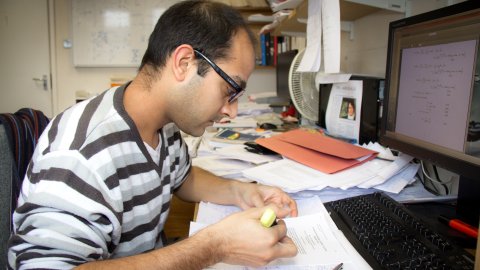15:45
Liouville quantum gravity as a mating of trees
Abstract
There is a simple way to “glue together” a coupled pair of continuum random trees to produce a topological sphere. The sphere comes equipped with a measure and a space-filling curve (which describes the “interface” between the trees). We present an explicit and canonical way to embed the sphere into the Riemann sphere. In this embedding, the measure is Liouville quantum gravity with parameter gamma in (0,2), and the curve is space-filling version of SLE with kappa=16/gamma^2. Based on joint work with Bertrand Duplantier and Scott Sheffield
Equivalence relations for quadratic forms
Abstract
We investigate equivalence relations for quadratic forms that can be expressed in terms of algebro-geometric properties of their associated quadrics, more precisely, birational, stably birational and motivic equivalence, and isomorphism of quadrics. We provide some examples and counterexamples and highlight some important open problems.
BFO: a Brute Force trainable algorithm for mixed-integer and multilevel derivative-free optimization
Abstract
The talk will describe a new "Brute Force Optimizer" whose objective is to provide a very versatile derivative-free Matlab package for bound-constrained optimization, with the distinctive feature that it can be trained to improve its own performance on classes of problems specified by the user (rather than on a single-but-wide problem class chosen by the algorithm developer). In addition, BFO can be used to optimize the performance of other algorithms and provides facilities for mixed-integer and multilevel problems, including constrained equilibrium calculations.



